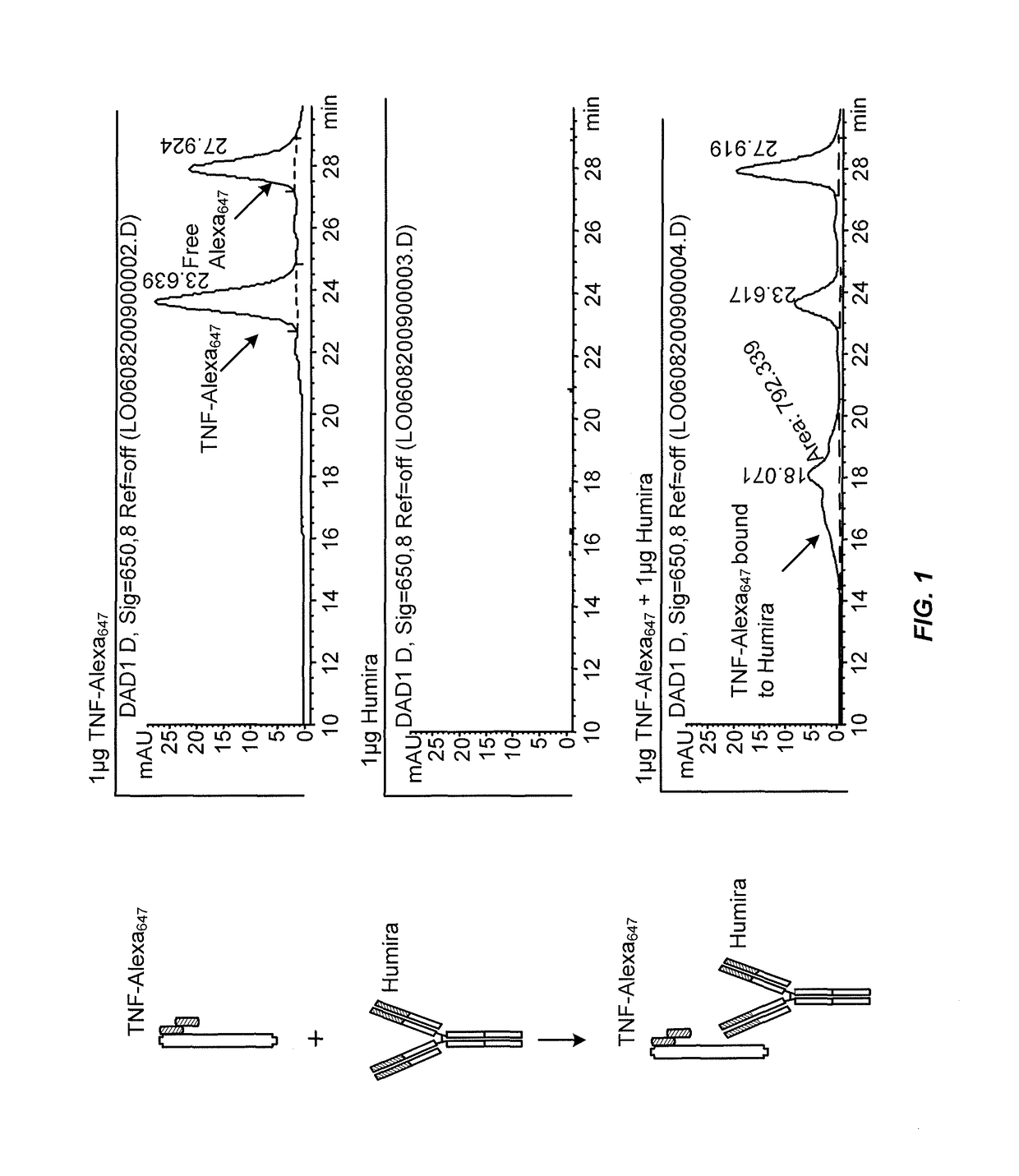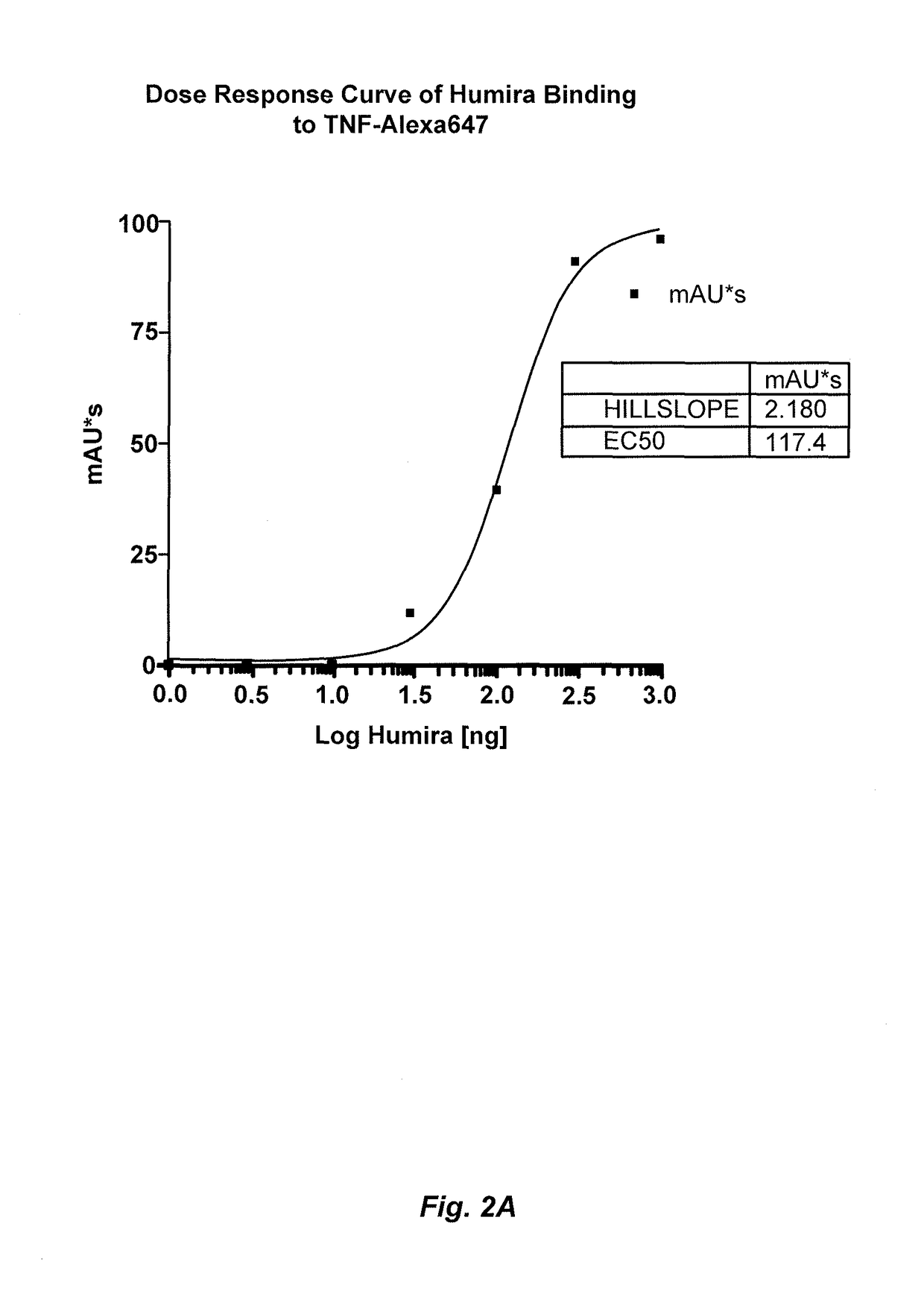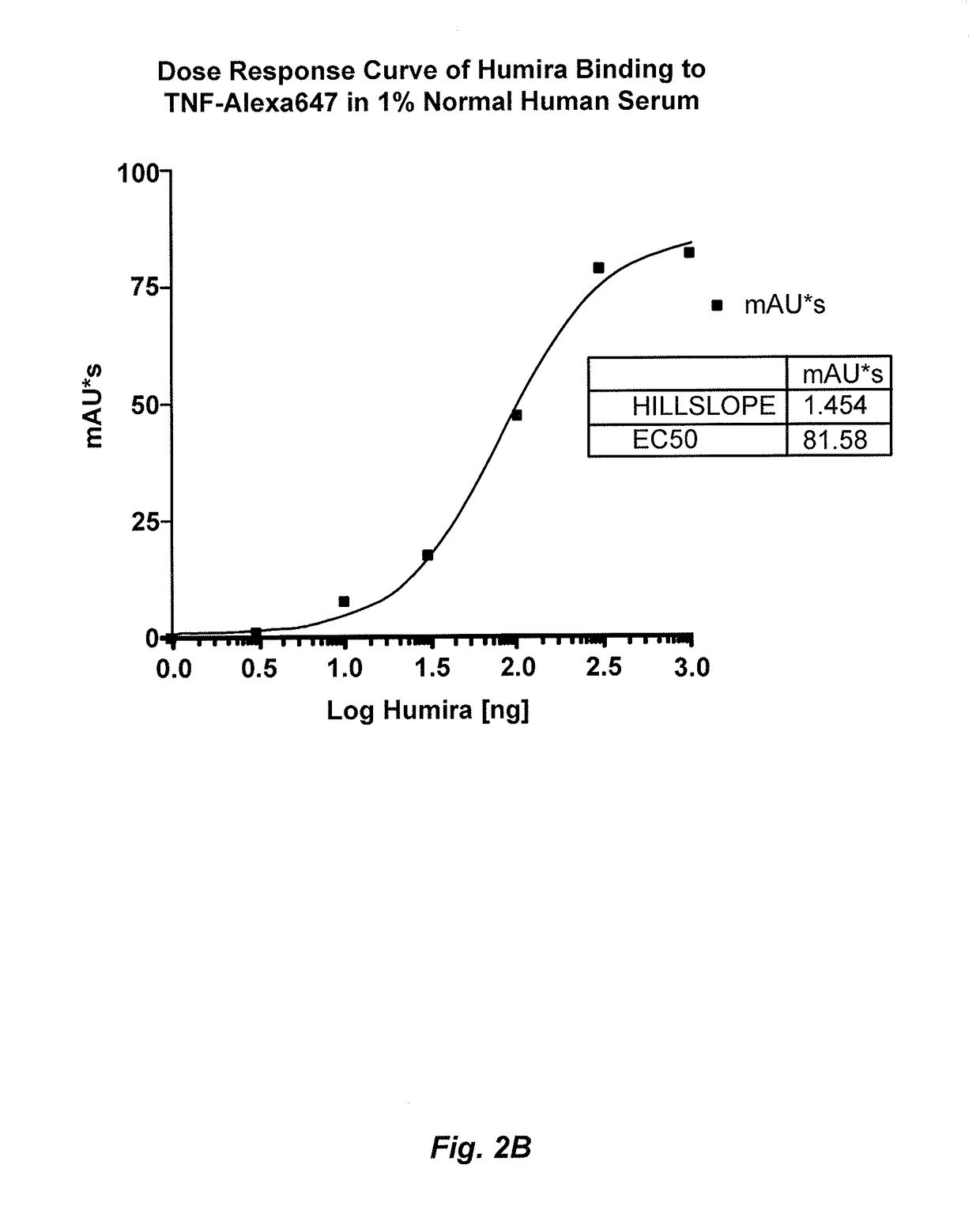Methods for determining anti-drug antibody isotypes
a technology of anti-drug antibodies and isotypes, which is applied in the field of methods for determining anti-drug antibody isotypes, can solve the problems of autoimmune disorders that are a significant and widespread medical problem, joint destruction and functional disability, and often redness of joints, so as to reduce toxicity in subjects and optimize therapy.
- Summary
- Abstract
- Description
- Claims
- Application Information
AI Technical Summary
Benefits of technology
Problems solved by technology
Method used
Image
Examples
example 1
Novel Mobility Shift Assay for Measuring Levels of Anti-TNFα Biologics
[0214]This example illustrates a novel homogeneous assay for measuring anti-TNFα drug concentration in a patient sample (e.g., serum) using size exclusion chromatography to detect the binding of the anti-TNFα drug to fluorescently labeled TNFα. The assay is advantageous because it obviates the need for wash steps, uses fluorophores that allow for detection on the visible and / or IR spectra which decreases background and serum interference issues, increases the ability to detect anti-TNFα drugs in patients with a low titer due to the high sensitivity of fluorescent label detection, and occurs as a liquid phase reaction, thereby reducing the chance of any changes in the epitope by attachment to a solid surface such as an ELISA plate.
[0215]In one exemplary embodiment, TNFα is labeled with a fluorophore (e.g., Alexa647), wherein the fluorophore can be detected on either or both the visible and IR spectra. The labeled T...
example 2
Novel Mobility Shift Assay for Measuring HACA and HAHA Levels
[0219]This example illustrates a novel homogeneous assay for measuring autoantibody (e.g., HACA and / or HAHA) concentrations in a patient sample (e.g., serum) using size exclusion chromatography to detect the binding of these autoantibodies to fluorescently labeled anti-TNFα drug. The assay is advantageous because it obviates the need for wash steps which remove low affinity HACA and HAHA, uses fluorophores that allow for detection on the visible and / or IR spectra which decreases background and serum interference issues, increases the ability to detect HACA and HAHA in patients with a low titer due to the high sensitivity of fluorescent label detection, and occurs as a liquid phase reaction, thereby reducing the chance of any changes in the epitope by attachment to a solid surface such as an ELISA plate.
[0220]The clinical utility of measuring autoantibodies (e.g., HACA, HAHA, etc.) that are generated against TNFα inhibitors...
example 3
Measurement of Human Anti-Chimeric Antibodies (HACA) and Infliximab (IFX) Levels in Patient Serum Using a Novel Mobility Shift Assay
Abstract
[0231]Background: Infliximab (IFX) is a chimeric monoclonal antibody therapeutic against TNFα that has been shown to be effective in treating autoimmune diseases such as rheumatoid arthritis (RA) and inflammatory bowel disease (IBD). However, antibodies against IFX were found in some IFX-treated patients through the detection of human anti-chimeric antibodies (HACA), which may reduce the drug's efficacy or induce adverse effects. Monitoring of HACA and IFX levels in individual patients may help to optimize the dosing and treatment with IFX. Current methods for detecting HACA are based on solid-phase assays, which are limited by the fact that the presence of IFX in the circulation may mask the presence of HACA and, therefore, measurement can only be done at least 8 weeks following a dose of IFX. Moreover, this time-lapse further confounds the ass...
PUM
| Property | Measurement | Unit |
|---|---|---|
| volume | aaaaa | aaaaa |
| pH | aaaaa | aaaaa |
| pH | aaaaa | aaaaa |
Abstract
Description
Claims
Application Information
 Login to View More
Login to View More - R&D
- Intellectual Property
- Life Sciences
- Materials
- Tech Scout
- Unparalleled Data Quality
- Higher Quality Content
- 60% Fewer Hallucinations
Browse by: Latest US Patents, China's latest patents, Technical Efficacy Thesaurus, Application Domain, Technology Topic, Popular Technical Reports.
© 2025 PatSnap. All rights reserved.Legal|Privacy policy|Modern Slavery Act Transparency Statement|Sitemap|About US| Contact US: help@patsnap.com



